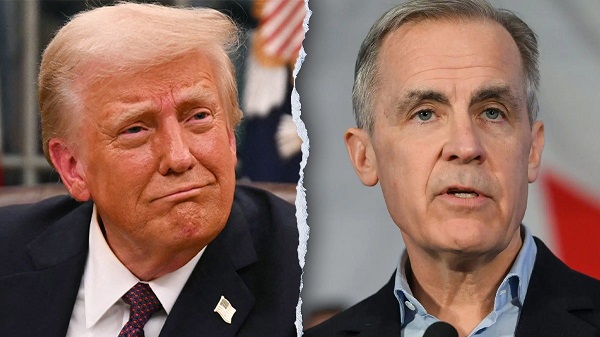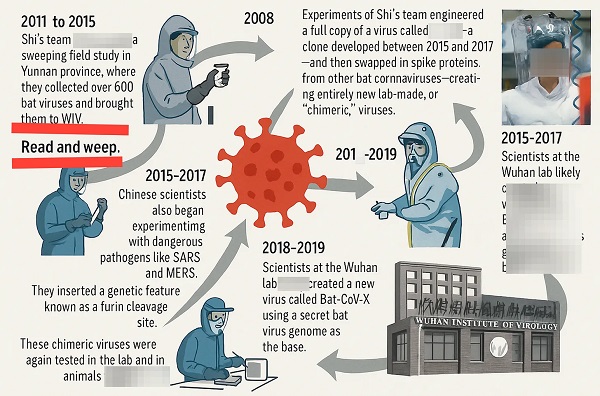Artificial Intelligence
The Biggest Energy Miscalculation of 2024 by Global Leaders – Artificial Intelligence
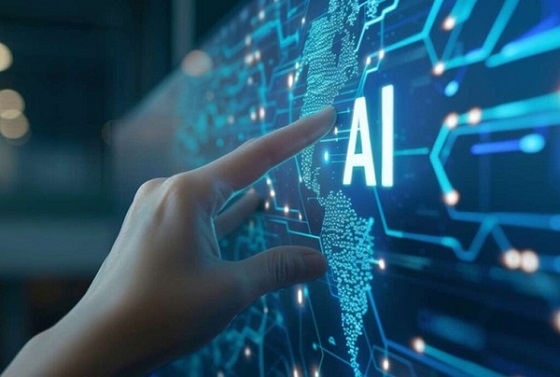
From EnergyNow.ca
By Maureen McCall
It’s generally accepted that the launch of Artificial Intelligence (AI) occurred at Dartmouth College in a 1956 AI workshop that brought together leading thinkers in computer science, and information theory to map out future paths for investigation. Workshop participants John McCarthy, Marvin Minsky, Nathaniel Rochester and Claude E. Shannon coined the term “artificial intelligence” in a proposal that they wrote for that conference. It started AI as a field of study with John McCarthy generally considered as the father of AI.
AI was developed through the 1960s but in the 1970s-1980s, a period generally referred to as “the AI Winter”, development was stalled by a focus on the limitations of neural networks. In the late 1980s, advancements resumed with the emergence of connectionism and neural networks. The 1990s-2000s are considered to be the beginning of the AI/ Machine Learning Renaissance. In the 2010s, further growth was spurred by the expansion of Big Data and deep learning, computer power and large-scale data sets. In 2022 an AI venture capital frenzy took off (the “AI frenzy”), and AI plunged into the mainstream in 2023 according to Forbes which was already tracking applications of AI across various industries.
By early 2024, the implementation of AI across industries was well underway- in healthcare, finance, creative fields and business. In the energy industry, digitalization conferences were addressing digital transformation in the North American oil & gas industry with speakers and attendees from E&P majors, midstream, pipeline, LNG companies and more as well as multiple AI application providers and the companies speaking and attending already had AI implementations well underway.
So how did global leaders not perceive the sudden and rapid rise of AI and the power commitments it requires?
How has the 2022 “AI frenzy” of investment and subsequent industrial adoption been off the radar of global policymakers until just recently? Venture capital is widely recognized as a driver of innovation and new company formation and leaders should have foreseen the surge of AI improvement and implementation by “following the money” so to speak. Perhaps the incessant focus of “blaming and shaming” industry for climate change blinded leaders to the rapid escalation of AI development that was signaled by the 2022 AI frenzy
Just as an example of lack of foresight, in Canada, the grossly delayed 2024 Fall Economic Statement had a last-minute insertion of “up to $15 billion in aggregate loan and equity investments for AI data center projects”. This policy afterthought is 2 years behind the onset of the AI frenzy and 12+ months behind the industrial adoption of AI. In addition, the Trudeau/Guilbeault partnership is still miscalculating the enormous AI power requirements.
As an example of the size of the power requirements of AI, one can look at the Wonder Valley project- the world’s largest AI data center industrial park in the Greenview industrial gateway near Grande Prairie Alberta. It is planned to “generate and offer 7.5 GW of low-cost power to hyperscalers over the next 5-10 years.” The cost of just this one project is well beyond the funding offered in the 2024 Fall Economic Statement.
“We will engineer and build a redundant power solution that meets the modern AI compute reliability standard,” said Kevin O’Leary, Chairman of O’Leary Ventures. “The first phase of 1.4 GW will be approximately US$ 2 billion with subsequent annual rollout of redundant power in 1 GW increments. The total investment over the lifetime of the project will be over $70 billion.”
To further explore the huge power requirements of AI, one can look at the comparison of individual AI queries/searches vs traditional non-AI queries. As reported by Bloomberg, “Researchers have estimated that a single ChatGPT query requires almost 10 times as much electricity to process as a traditional Google search.” Multiply this electricity demand by the millions of industrial users as industrial AI implementation continues to expand worldwide. As in the same Bloomberg article- “By 2034, annual global energy consumption by data centers is expected to top 1,580 terawatt-hours—about as much as is used by all of India—from about 500 today.”
This is the exponential demand for electricity that North American & global leaders did not see coming – a 24/7 demand that cannot be satisfied by unreliable and costly green energy projects – it requires an “all energies” approach. Exponential AI demand threatens to gobble up supply and dramatically increase electricity prices for consumers. Likewise, leadership does not perceive that North American grids are vulnerable and outdated and would be unable to deliver reliable supply for AI data centers that cannot be exposed to even a few seconds of power outage. Grid interconnections are unreliable as mentioned in the following excerpt from a September 2024 article in cleanenergygrid.org.
“Our grid, for all of its faults, is now a single interconnected “machine” over a few very large regions of the country. Equipment failures in Arizona can shut the lights out in California, just as overloaded lines in Ohio blacked out 55 million people in eight states from Michigan to Boston – and the Canadian province of Ontario – in 2003.”
AI’s power demands are motivating tech companies to develop more efficient means of developing AI. Along with pressure to keep fossil fuels in the mix, billions are being invested in alternative energy solutions like nuclear power produced by Small Nuclear Reactors (SMRs).
Despite SMR optimism, the reality is that no European or North American SMRs are in operation yet. Only Russia & China have SMRs in operation and most data centers are focusing on affordable natural gas power as the reality sets in that nuclear energy cannot scale quickly enough to meet urgent electricity needs. New SMR plants could be built and operational possibly by 2034, but for 2025 Canada’s power grid is already strained, with electricity demand to grow significantly, driven by electric vehicles and data centers for AI applications.
AI has a huge appetite for other resources as well. For example, the most energy and cost-efficient ways to chill the air in data centers rely on huge quantities of potable water and the exponential amount of data AI produces will require dramatic increases in internet networks as well as demand for computer chips and the metals that they require. There is also an intense talent shortage creating AI recruitment competitions for the talent pool of individuals trained by companies like Alphabet, Microsoft and OpenAI.
AI development is now challenging the public focus on climate change. In Canada as well as in the U.S. and globally, left-leaning elected officials who focused keenly on policies to advance the elimination of fossil fuels were oblivious to the tsunami of AI energy demand about to swamp their boats. Canadian Member of Parliament Greg McLean, who has served on the House of Commons Standing Committees of Environment, Natural Resources, and Finance, and as the Natural Resources critic for His Majesty’s Loyal Opposition, has insight into the reason for the change in focus.
“Education about the role of all forms of energy in technology development and use has led to the logical erosion of the ‘rapid energy transition’ mantra and a practical questioning of the intents of some of its acolytes. The virtuous circle of technological development demanding more energy, and then delivering solutions for society that require less energy for defined tasks, could not be accomplished without the most critical input – more energy. This has been a five-year journey, swimming against the current — and sometimes people need to see the harm we are doing in order to objectively ask themselves ‘What are we accomplishing?’ … ‘What choices are being made, and why?’…. and ‘Am I getting the full picture presentation or just the part someone wants me to focus on?’”
With the election of Donald Trump, the “Trump Transition” now competes with the “Energy Transition” focus, changing the narrative in the U.S. to energy dominance. For example, as reported by Reuters, the U.S. solar industry is now downplaying climate change messaging.
“The U.S. solar industry unveiled its lobbying strategy for the incoming Trump administration, promoting itself as a domestic jobs engine that can help meet soaring power demand, without referencing its role in combating climate change.”
It’s important to note here that the future of AI is increasingly subject to societal considerations as well as technological advancements. Political, ethical, legal, and social frameworks will increasingly impact AI’s development, enabling or limiting its implementations. Since AI applications involve “human teaming” to curate and train AI tools, perceptions of the intent of AI implementations are key. In the rush to implementation, employees at many companies are experiencing changing roles with increased demand for workers to train AI tools and curate results. Will tech optimism be blunted by the weight of extra tasks placed on workers and by suspicions that those workers may ultimately be replaced? Will resistance develop as humans and AI are required to work together more closely?
Business analyst Professor Henrik von Scheel of the Arthur Lok Jack Global School of Business describes the importance of the human factor in AI adoption.
“It’s people who have to manage the evolving environment through these new tools,” von Scheel explains. “It’s been this way ever since the first caveperson shaped a flint, only now the tools are emerging from the fusion of the digital, physical and virtual worlds into cyber-physical systems.”
A conversation with a recent graduate who questioned the implementation of AI including the design of guardrails and regulations by members of an older generation in management made me wonder…Is there a generational conflict brewing from the lack of trust between the large proportion of baby boomers in the workforce- predominantly in management- and the younger generation in the workforce that may not have confidence in the ability of mature management to fully understand and embrace AI tech and influence informed decisions to regulate it?
It’s something to watch in 2025.
Maureen McCall is an energy professional who writes on issues affecting the energy industry.
Artificial Intelligence
Apple faces proposed class action over its lag in Apple Intelligence

News release from The Deep View
| Apple, already moving slowly out of the gate on generative AI, has been dealing with a number of roadblocks and mounting delays in its effort to bring a truly AI-enabled Siri to market. The problem, or, one of the problems, is that Apple used these same AI features to heavily promote its latest iPhone, which, as it says on its website, was “built for Apple Intelligence.” |
| Now, the tech giant has been accused of false advertising in a proposed class action lawsuit that argues that Apple’s “pervasive” marketing campaign was “built on a lie.” |
| The details: Apple has — if reluctantly — acknowledged delays on a more advanced Siri, pulling one of the ads that demonstrated the product and adding a disclaimer to its iPhone 16 product page that the feature is “in development and will be available with a future software update.” |
|
| Apple did not respond to a request for comment. |
| The lawsuit was first reported by Axios, and can be read here. |
| This all comes amid an executive shuffling that just took place over at Apple HQ, which put Vision Pro creator Mike Rockwell in charge of the Siri overhaul, according to Bloomberg. |
| Still, shares of Apple rallied to close the day up around 2%, though the stock is still down 12% for the year. |
Artificial Intelligence
Apple bets big on Trump economy with historic $500 billion U.S. investment
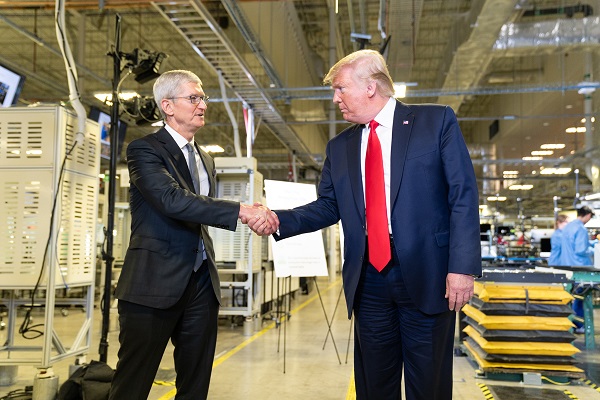
Diving Deeper:
Apple’s unprecedented $500 billion investment marks what the company calls “an extraordinary new chapter in the history of American innovation.” The tech giant plans to establish an advanced AI server manufacturing facility near Houston and significantly expand research and development across several key states, including Michigan, Texas, California, and Arizona.
Apple CEO Tim Cook highlighted the company’s confidence in the U.S. economy, stating, “We’re proud to build on our long-standing U.S. investments with this $500 billion commitment to our country’s future.” He noted that the expansion of Apple’s Advanced Manufacturing Fund and investments in cutting-edge technology will further solidify the company’s role in American innovation.
President Trump was quick to highlight Apple’s announcement as a testament to his administration’s economic policies. In a Truth Social post Monday morning, he wrote:
“APPLE HAS JUST ANNOUNCED A RECORD 500 BILLION DOLLAR INVESTMENT IN THE UNITED STATES OF AMERICA. THE REASON, FAITH IN WHAT WE ARE DOING, WITHOUT WHICH, THEY WOULDN’T BE INVESTING TEN CENTS. THANK YOU TIM COOK AND APPLE!!!”
Trump previously hinted at the investment during a White House meeting Friday, revealing that Cook had committed to investing “hundreds of billions of dollars” in the U.S. economy. “That’s what he told me. Now he has to do it,” Trump quipped.
Apple’s expansion will include 20,000 new jobs, with a strong focus on artificial intelligence, silicon engineering, and machine learning. The company also aims to support workforce development through training programs and partnerships with educational institutions.
With Apple’s announcement, the U.S. economy stands to benefit from a major influx of investment into high-tech manufacturing and innovation—further underscoring the tech industry’s continued growth under Trump’s economic agenda.
-

 2025 Federal Election1 day ago
2025 Federal Election1 day agoNeil Young + Carney / Freedom Bros
-
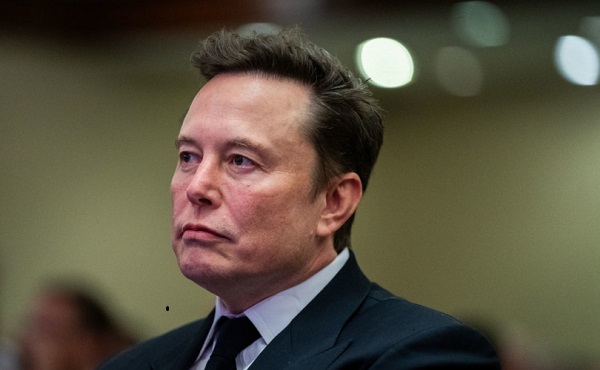
 Business1 day ago
Business1 day agoDOGE Is Ending The ‘Eternal Life’ Of Government
-

 espionage17 hours ago
espionage17 hours agoEx-NYPD Cop Jailed in Beijing’s Transnational Repatriation Plot, Canada Remains Soft Target
-

 2025 Federal Election2 days ago
2025 Federal Election2 days agoRCMP Whistleblowers Accuse Members of Mark Carney’s Inner Circle of Security Breaches and Surveillance
-

 International1 day ago
International1 day agoUK Supreme Court rules ‘woman’ means biological female
-

 2025 Federal Election1 day ago
2025 Federal Election1 day agoTucker Carlson Interviews Maxime Bernier: Trump’s Tariffs, Mass Immigration, and the Oncoming Canadian Revolution
-

 2025 Federal Election24 hours ago
2025 Federal Election24 hours agoCanada drops retaliatory tariffs on automakers, pauses other tariffs
-

 2025 Federal Election2 days ago
2025 Federal Election2 days agoBureau Exclusive: Chinese Election Interference Network Tied to Senate Breach Investigation





